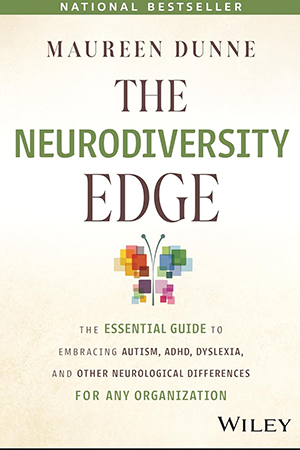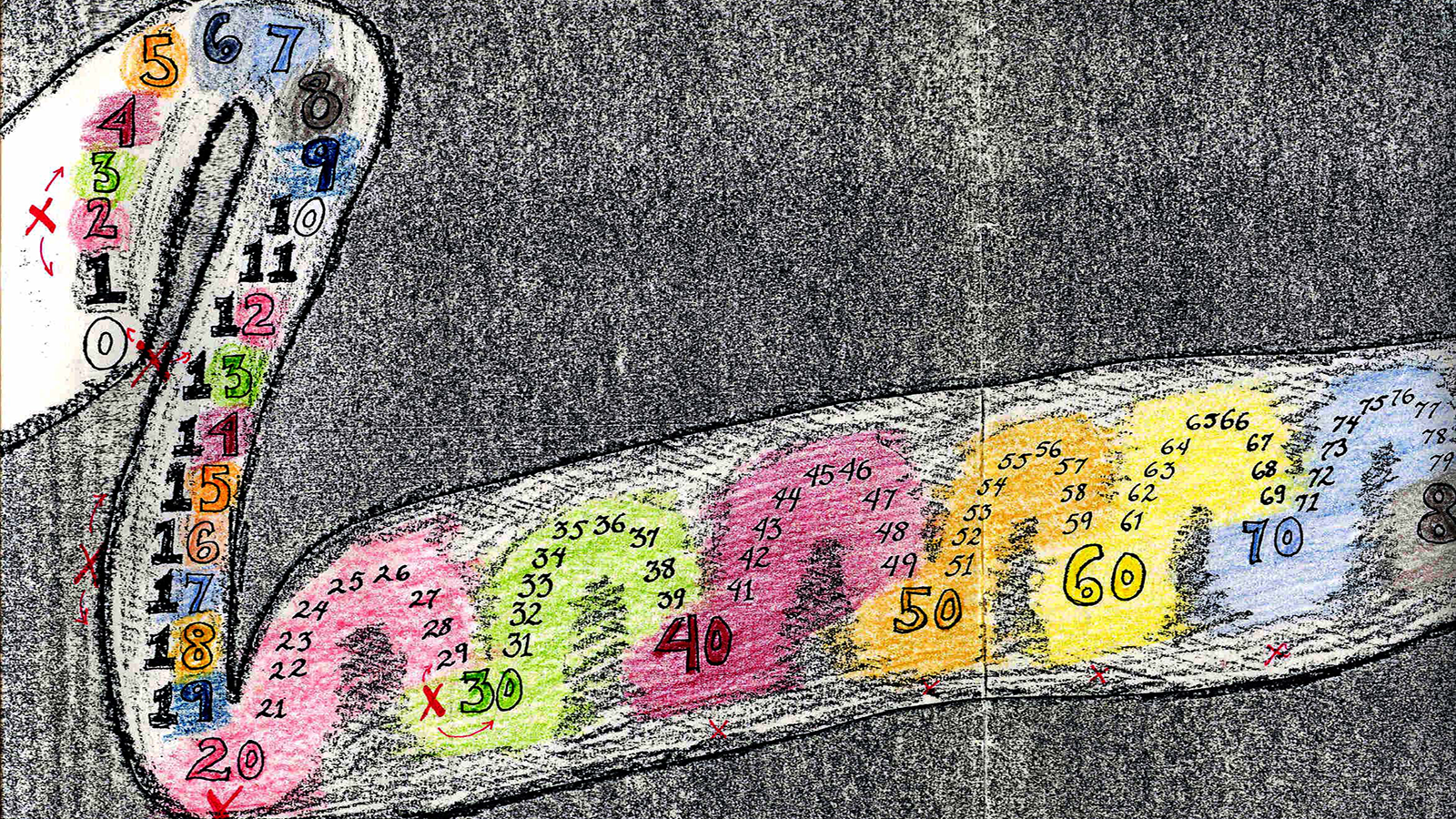
Library
Neurodivergence
Simon Baron-Cohen
The Pattern Seekers
A groundbreaking argument about the link between autism and ingenuity. Why can humans alone invent? In The Pattern Seekers, Cambridge University psychologist Simon Baron-Cohen makes a case that autism is as crucial to our creative and cultural history as the mastery of fire. Indeed, Baron-Cohen argues that autistic people have played a key role in human progress for seventy thousand years, from the first tools to the digital revolution. How? Because the same genes that cause autism enable the pattern seeking that is essential to our species's inventiveness. However, these abilities exact a great cost on autistic people, including social and often medical challenges, so Baron-Cohen calls on us to support and celebrate autistic people in both their disabilities and their triumphs. Ultimately, The Pattern Seekers isn't just a new theory of human civilization, but a call to consider anew how society treats those who think differently.
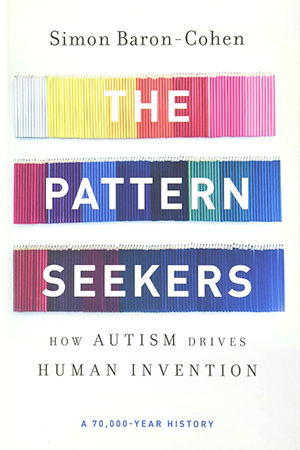
Gabor Maté
Scattered Minds
Scattered Minds explodes the myth of attention deficit disorder as genetically based – and offers real hope and advice for children and adults who live with the condition. With wisdom gained through years of medical practice and research, Scattered Minds is a must-read for parents – and for anyone interested how experiences in infancy shape the biology and psychology of the human brain. Scattered Minds demonstrates that ADD is not an inherited illness, but a reversible impairment and developmental delay. It explains that in ADD, circuits in the brain whose job is emotional self-regulation and attention control fail to develop in infancy – and why. It shows how ‘distractibility’ is the psychological product of life experience and allows parents to understand what makes their ADD children tick, and adults with ADD to gain insights into their emotions and behaviours. Furthermore, expresses optimism about neurological development even in adulthood and presents a programme of how to promote this development in both children and adults.
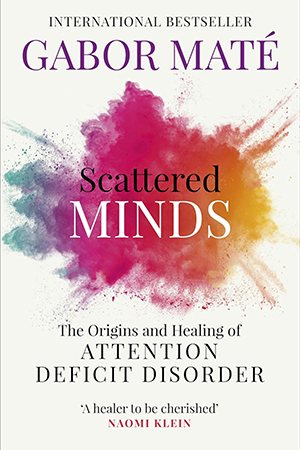
Julie Smith
Why Has Nobody Told Me This Before?
Drawing on years of experience as a clinical psychologist, online sensation Dr Julie Smith shares all the skills you need to get through life's ups and downs. Filled with secrets from a therapist's toolkit, this is a must-have handbook for optimising your mental health. Dr Julie's simple but expert advice and powerful coping techniques will help you stay resilient no matter what life throws your way. Written in short, bite-sized entries, you can turn straight to the section you need depending on the challenge you're facing - and immediately find the appropriate tools to help with managing anxiety, dealing with criticism, battling low mood, building self-confidence, finding motivation, learning to forgive yourself This book tackles the everyday issues that affect us all and offers easy, practical solutions that might just change your life.
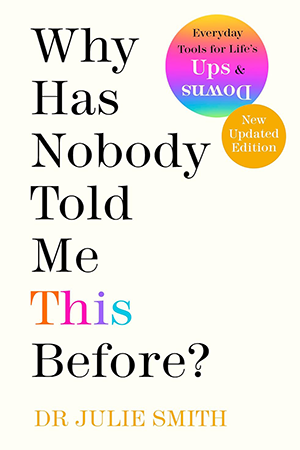
Clara Törnvall
The Autists
An incisive and deeply candid account that explores autistic women in culture, myth, and society through the prism of the author’s own diagnosis. Until the 1980s, autism was regarded as a condition found mostly in boys. Even in our time, autistic girls and women have largely remained undiagnosed. When portrayed in popular culture, women on the spectrum often appear simply as copies of their male counterparts — talented and socially awkward. Yet autistic women exist, and always have. They are varied in their interests and in their experiences. Autism may be relatively new as a term and a diagnosis, but not as a way of being and functioning in the world. It has always been part of the human condition. So who are these women, and what does it mean to see the world through their eyes? In The Autists, Clara Törnvall reclaims the language to describe autism and explores the autistic experience in arts and culture throughout history. From popular culture, films, and photography to literature, opera, and ballet, she dares to ask what it might mean to re-read these works through an autistic lens — what we might discover if we allow perspectives beyond the neurotypical to take centre stage.
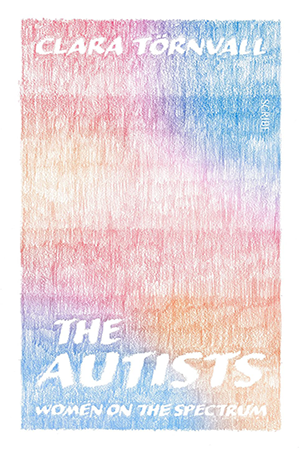
Simon Baron-Cohen
Understanding Other Minds
This book comprises 26 exciting chapters by internationally renowned scholars, addressing the central psychological process separating humans from other animals: the ability to imagine the thoughts and feelings of others, and to reflect on the contents of our own mindsa theory of mind (ToM). The four sections of the book cover developmental, cultural, and neurobiological approaches to ToM across different populations and species. The chapters explore the earliest stages of development of ToM in infancy, and how plastic ToM learning is; why 3-year-olds typically fail false belief tasks and how ToM continues to develop beyond childhood into adulthood; the debate between simulation theory and theory theory; cross-cultural perspectives on ToM and how ToM develops differently in deaf children; how we use our ToM when we make moral judgments, and the link between emotional intelligence and ToM; the neural basis of ToM measured by evoked response potentials, functional magnetic resonance imaging, and studies of brain damage; emotional vs. cognitive empathy in neuropsychiatric conditions such as autism, schizophrenia, and psychopathy; the concept of self in autism and teaching methods targeting ToM deficits; the relationship between empathy, the pain matrix and the mirror neuron system; the role of oxytocin and fetal testosterone in mentalizing and empathy; the heritability of empathy and candidate single nucleotide polymorphisms associated with empathy; and ToM in non-human primates. These 26 chapters represent a masterly overview of a field that has deepened since the first edition was published in 1993.
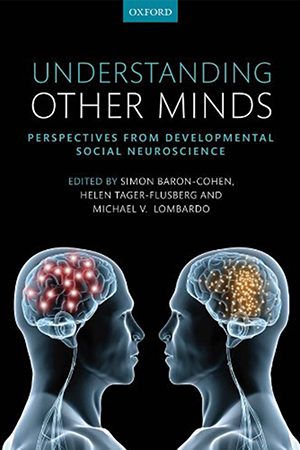
Jenara Nerenberg
Divergent Minds
A paradigm-shifting study of neurodivergent women—those with ADHD, autism, synesthesia, high sensitivity, and sensory processing disorder—exploring why these traits are overlooked in women and how society benefits from allowing their unique strengths to flourish. As a successful Harvard and Berkeley-educated writer, entrepreneur, and devoted mother, Jenara Nerenberg was shocked to discover that her “symptoms”--only ever labeled as anxiety-- were considered autistic and ADHD. Being a journalist, she dove into the research and uncovered neurodiversity—a framework that moves away from pathologizing “abnormal” versus “normal” brains and instead recognizes the vast diversity of our mental makeups. When it comes to women, sensory processing differences are often overlooked, masked, or mistaken for something else entirely. Between a flawed system that focuses on diagnosing younger, male populations, and the fact that girls are conditioned from a young age to blend in and conform to gender expectations, women often don’t learn about their neurological differences until they are adults, if at all. As a result, potentially millions live with undiagnosed or misdiagnosed neurodivergences, and the misidentification leads to depression, anxiety, low self-esteem, and shame. Meanwhile, we all miss out on the gifts their neurodivergent minds have to offer. Divergent Mind is a long-overdue, much-needed answer for women who have a deep sense that they are “different.” Sharing real stories from women with high sensitivity, ADHD, autism, misophonia, dyslexia, SPD and more, Nerenberg explores how these brain variances present differently in women and dispels widely-held misconceptions (for example, it’s not that autistic people lack sensitivity and empathy, they have an overwhelming excess of it). Nerenberg also offers us a path forward, describing practical changes in how we communicate, how we design our surroundings, and how we can better support divergent minds. When we allow our wide variety of brain makeups to flourish, we create a better tomorrow for us all.
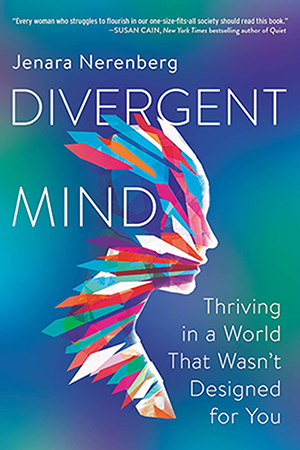
Olga Bogdashina
Theory of Mind
Inspired by the often uncomfortable interplay between autistic individuals, parents and professionals in understanding autistic spectrum conditions, Olga Bogdashina uses the concept of Theory of Mind (ToM) to consider these groups' different (and often conflicting) perspectives. ToM is the ability to imagine and make judgements about what others feel and think; its absence in autistic individuals is called 'mindblindness'. This book addresses the 'mindblindness' of people united in their interest in autism but divided by their different angles and perspectives. Divided into four parts, the book first defines autism, then the views of the three main groups working with it - autistic individuals, parents and professionals - under the headings of classifications, diagnosis, causes, development, theories and treatment. By comparing and reconciling the different perspectives in this way, the book helps each group to understand and predict each other's responses and behaviours.This enlightening and innovative book offers a unique way of 'stepping in each other's shoes' and is a valuable resource for all people living or working with autism.
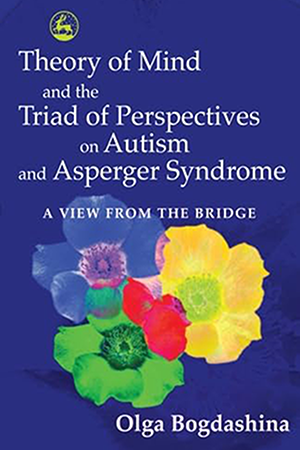
Amanda Kirby
Neurodiversity at Work
An organization's employees are its biggest competitive advantage. Performance gains can be achieved through cost saving, process improvement or technology adoption, but the biggest difference is made by people. This means that recruiting, engaging and retaining the very best talent has never been more important. Crucially, these employees should be a diverse group of people with different approaches, skills and strengths in problem-solving and driving innovation. As well as focusing on gender, race, age and class, it is critical that businesses also develop a neurodiverse workforce if they are committed to outperforming the competition and achieving sustainable business growth. Neurodiversity at Work is a practical guide that explains what neurodiversity is, why it's important and what the benefits are. It covers how to attract, recruit and engage neurodiverse talent and provides guidance on how to adapt HR policies, processes and workplaces to ensure that all employees, including the 2 in 10 employees in the UK who are neurodiverse, can reach their full potential.
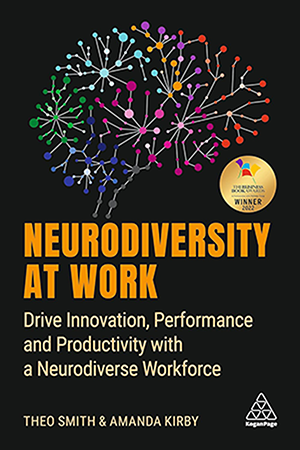
Julie F. Skolnick
Gifted and Distractible
A practical, research-based guide that demystifies giftedness and learning differences in order to help “twice exceptional” children thrive. Does your child exhibit giftedness and behavioral issues like meltdowns, power struggles, and difficulty relating to their peers? Are they out-of-the-box thinkers requiring different teaching and learning methods? It’s a widely held misconception that intellectual ability and social and emotional success go hand in hand. In fact, “twice exceptional” kids—those who are gifted and have simultaneous learning differences like ADHD, Autism, or dyslexia—are often misunderstood by parents, teachers, and themselves. This much-needed and empowering guide reveals the unique challenges these remarkable kids face, and offers strength-based, hands-on strategies for understanding, supporting, and advocating for twice exceptional kids. In a world that labels them lazy, scattered, attention-seeking, and a problem that can’t be solved, these tools will help you reimagine the world through your child’s unique perspective—so you can help them thrive.
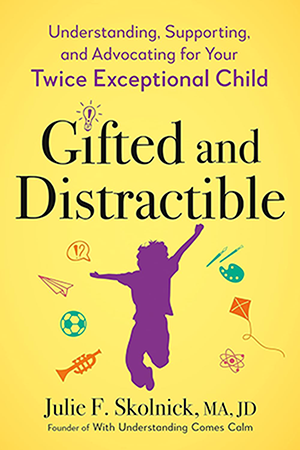
Michael Fitzgerald
Genius Genes: How Asperger Talents Changed the World
Genius Genes: How Asperger Talents Changed the World proposes that many famous historical figures had an autistic mind-style, and that this should color the way we approach autism today Arguing that highly creative people are largely “born and not made,” the authors of Genius Genes: How Asperger Talents Changed the World present case studies of the lives of 21 famous individuals, tying their personalities, talents and lifestyles to the major characteristics of Asperger Syndrome. Subjects range from the well-known to some more obscure, including political/military figures (Thomas Jefferson, Thomas ‘Stonewall’ Jackson, Bernard Law Montgomery and Charles de Gaulle), mathematicians (Archimedes, Charles Babbage, Paul Erdös, Norbert Wiener, David Hilbert, and Kurt Gödel), scientists (Isaac Newton, Charles Darwin, Albert Einstein, Nikola Tesla, Henry Cavendish and Gregor Mendel), writers (Gerard Manley Hopkins and H. G. Wells), plus maverick aviator Charles Lindbergh, psychologist John Broadus Watson and sexologist Alfred C. Kinsey.This book’s chief importance lies in challenging – from a fresh perspective – an often negative perception of autism and Asperger Syndrome by demonstrates that many persons with autism have lived rich, complex and productive lives, and that their intelligence contributed hugely to shaping the world that we now know.
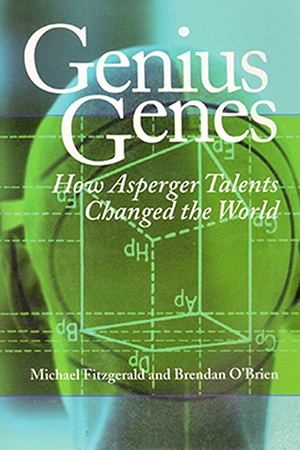
Maureen Dunne
The Neurodiversity Edge
Maureen Dunne presents a pioneering framework to harnessing the power of neurodiversity to navigate the most important human resources revolution in the modern era. Did you know that an estimated 1 in 5 people are "neurodivergent"—have a mind that works differently, such as the autistic, ADHDers, the dyslexic, synesthetes, and other unique neurotypes—and that the vast majority are motivated, skilled, and unemployed or underemployed? This indispensable guide is based on more than two decades of immersive cognitive science research, case studies, stories from neurodivergent voices, in-the-trenches work with hundreds of organizations from start-ups to global Fortune 500 titans, and Dr. Dunne's own lived experiences as a neurodivergent employer, entrepreneur, board member, and CEO. Too many unique minds and perspectives on the sidelines, and too many organizations beset by groupthink, innovation-stagnation, and a lack of access to qualified new candidates. The Neurodiversity Edge is an essential guide for executives, board directors, human resources professionals, managers, recruiters, entrepreneurs, venture capitalists, allies, educators, nonprofit leaders, and anyone with an interest in better understanding neurodiversity, authentic neuroinclusion, and the human mind.
